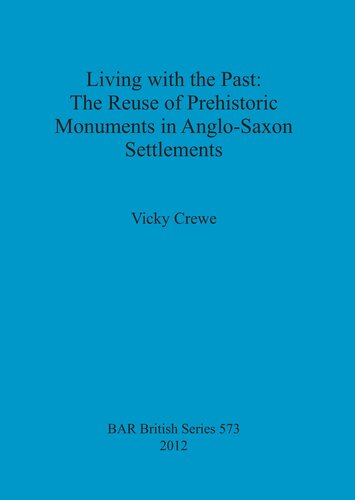

Most ebook files are in PDF format, so you can easily read them using various software such as Foxit Reader or directly on the Google Chrome browser.
Some ebook files are released by publishers in other formats such as .awz, .mobi, .epub, .fb2, etc. You may need to install specific software to read these formats on mobile/PC, such as Calibre.
Please read the tutorial at this link: https://ebookbell.com/faq
We offer FREE conversion to the popular formats you request; however, this may take some time. Therefore, right after payment, please email us, and we will try to provide the service as quickly as possible.
For some exceptional file formats or broken links (if any), please refrain from opening any disputes. Instead, email us first, and we will try to assist within a maximum of 6 hours.
EbookBell Team

5.0
20 reviewsTo date there has been little systematic study of the appropriation of, or attitudes to, prehistoric monuments in settlements of the period. The objectives of the research presented here are twofold. Firstly, it assesses how widespread the reuse of prehistoric monuments was in early to middle Anglo-Saxon settlements. In so doing, it examines the types of settlements in which the activity occurred and the types of prehistoric features that were reused. This is achieved through a review of the Anglo-Saxon settlement evidence in a regional study area. The settlements discussed in this study date to the period c.AD 450-850, with a regional focus based on central England, defined here to the north by the Humber and to the south by the Thames. In addition to well-known and published sites, this review makes use of data that is less frequently discussed in archaeological discourse, such as partially excavated or unpublished settlements that have not previously attracted a great deal of attention from scholars. The second aim is to assess how, and particularly why, monuments were appropriated in settlements. In order to answer these questions an in-depth, site-by-site approach is taken, in which the layout and use of space in a number of case studies are analysed. These case studies allow greater understanding of the ways in which older monuments could be referenced in settlements, how reuse changed over time, and why monuments may have been significant. Four Gazetteers provide locational and reference data to the selected sites.